#depatie-freleng enterprises
Text

The Pink Panther animation cel (1965)
#the pink panther#friz freleng#animation cels#60s cartoons#animation shorts#depatie-freleng enterprises#sixties#1965
145 notes
·
View notes
Text
There are a lot of crazy connections in animation, and here are some of my favorites.
Rudolph the Red-Nosed Reindeer and The Last Unicorn were both produced by Rankin-Bass, and it’s honestly kind of funny considering that when you watch them both back to back.
However, TLU was animated by Topcraft, which was a Japanese studio that later animated Nausicaa of the Valley of the Wind before evolving into Studio Ghibli. So that means there’s a direct link between Rudolph and Princess Mononoke.
Plus, some of RB’s stop-motion animators also worked on a film from 1979 called Nutcracker Fantasy, including Tadahito Mochinaga, the animation director on most of the sixties stuff like Rudolph. It has a very similar style to the stop-motion RB specials, but was actually produced by Sanrio. So there’s also a direct link from Rudolph to Aggretsuko.
Romeo Muller wrote the majority of the Rankin-Bass stuff, but he also did work for Fred Wolf Films, including writing all three Puff the Magic Dragon specials. And Fred Wolf Films also provided the animation for The Mouse and His Child, another Sanrio film.
Oh, and both Rankin-Bass AND Sanrio have a direct link to Osamu Tezuka as well. Like, you probably already know Sanrio produced both Unico films, which were adaptations of Tezuka’s work. But Mushi Productions, the same studio that animated a lot of Tezuka shows like Astro Boy and Kimba the White Lion, animated Frosty the Snowman for Rankin-Bass!
Speaking of Unico, both films were animated by Madhouse, which later made a lot of really edgy and mature anime like Ninja Scroll, Perfect Blue, Death Note, and Black Lagoon.
Before starting up Mushi Productions, Tezuka briefly worked for Toei Animation. Toei is a studio you know best for stuff like Dragon Ball, Sailor Moon, and One Piece, but they also did some outsourced work for some American studios back in the day, including some work for Rankin-Bass (again!), and the eighties My Little Pony series. Oh, and Hayao Miyazaki and Isao Takahata did work there early on, so there’s another Ghibli connection.
Speaking of My Little Pony, the G1 series (along with other Hasbro cartoons like Transformers and G.I. Joe) was produced by Marvel Productions, which was actually directly spun off from DePatie-Freleng Enterprises, the studio that produced both the Pink Panther cartoons and most of the seventies Dr. Seuss specials like The Cat in the Hat and The Lorax. If DePatie-Freleng’s name sounds familiar, that’s because one of the founders was famed Looney Tunes director Friz Freleng. So I guess MLP has a connection to both Dr. Seuss AND Looney Tunes.
I could go on and on, and maybe I will in an eventual reblog, but I think you get the point by now.
#rankin-bass#topcraft#studio ghibli#sanrio#fred wolf films#osamu tezuka#madhouse#mushi production#toei animation#hasbro#marvel productions#depatie-freleng enterprises
28 notes
·
View notes
Photo
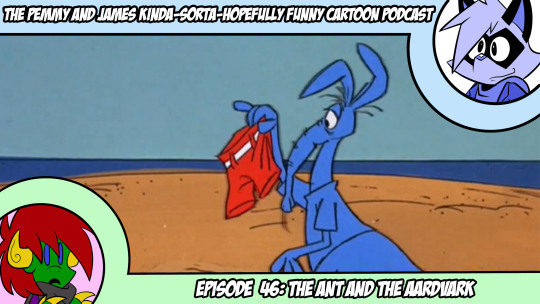
The PnJ Cartoon Podcast - The Ant and the Aardvark
In the newest installment of the Pemmy and James Cartoon Podcast, we take a look at DFE's The Ant And The Aardvark, because we're a couple of kooks. https://youtu.be/RH9jMWgZpx0
Posted using PostyBirb
3 notes
·
View notes
Text
Looney Tunes Title (1930 - 1969)
In celebration of the 93rd birthday of Looney Tunes, I did, what I like to call, a “title evolution” post.

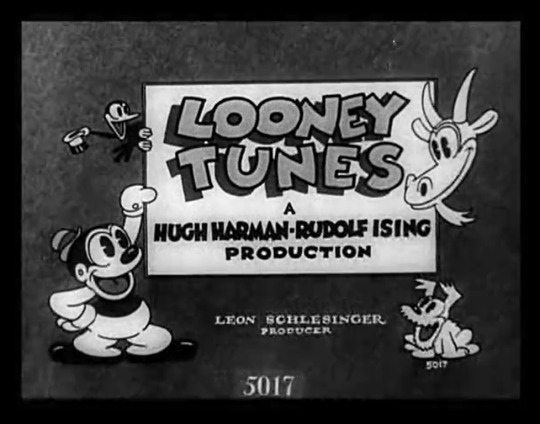

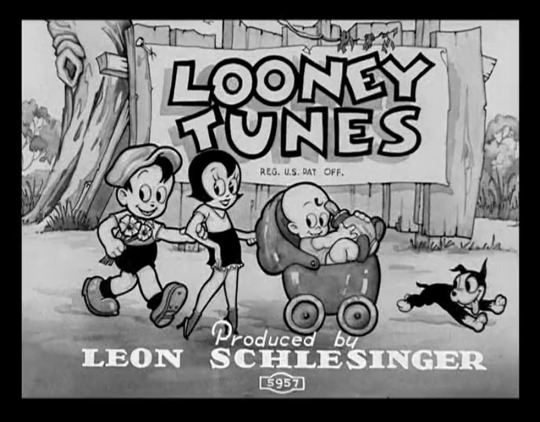

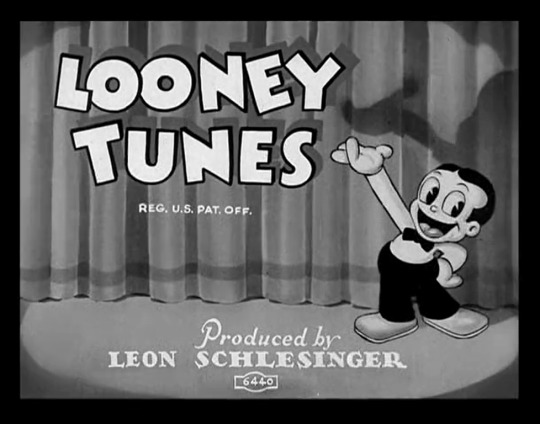




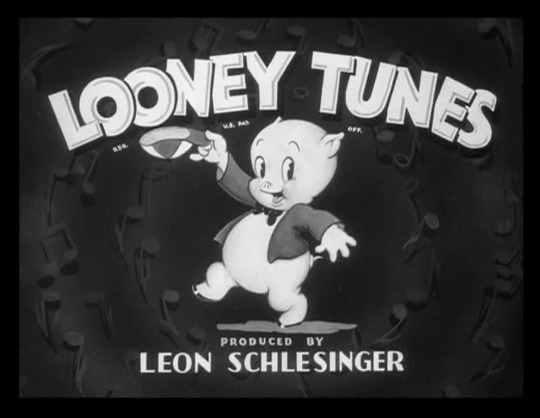

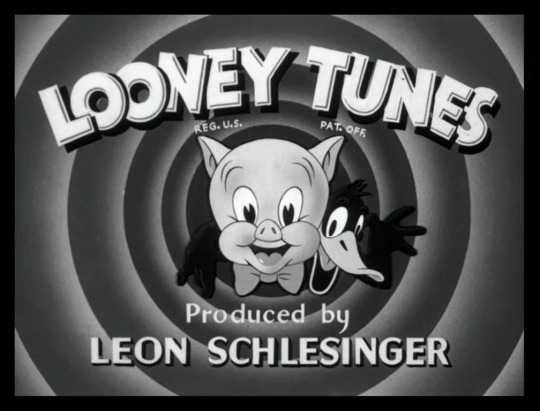



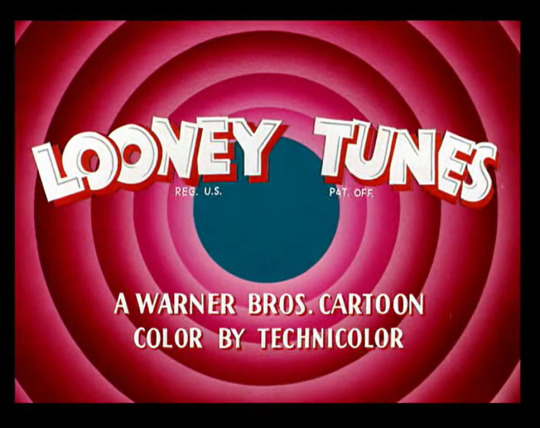
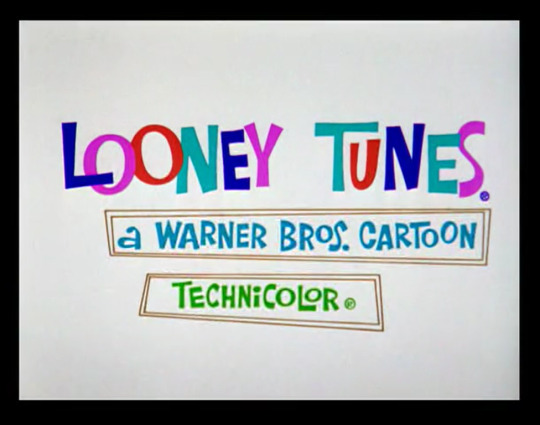

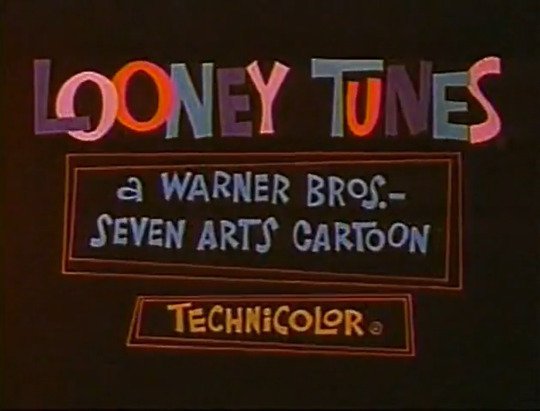
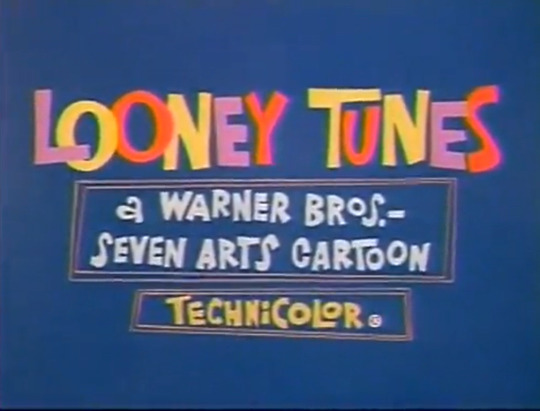
#looney tunes#bosko#buddy#porky pig#warner bros.#Leon Schlesinger#warner bros. seven arts#DePatie-Freleng Enterprise#honey#Vitaphone#warner bros. cartoons#termite terrace#daffy duck#the golden age of animation#harman and ising
119 notes
·
View notes
Video
The Pink Panther in A Fly in the Pink
#youtube#The Pink Panther animated shorts produced between December 18 1964 and February 1 1980 by DePatie-Freleng Enterprises (DFE Films) Ninety-two
0 notes
Note
do you happen to know why there’s a noticeable drop in animation quality in the Daffy vs. Speedy cartoons? I’m very curious
short answer: studio shutdowns, the theatrical industry on the decline thanks to TV, lower budgets, all of their main talent either gone or mentally checked out beyond belief
MUCH longer answer reaffirming the above points!: the WB studio had a bit of a troubled lifespan, and the falling of the dominos can be traced back to the early '50s (or hell even post-war, since there were Technicolor shortages that caused lengthy backlogs) with the first--keyword, FIRST!--studio shutdown in 1953. 3D was on a huge rise around that time, and Jack Warner believed it would be the new industry standard. so! the cartoon department was shut for a few months so they could figure out if they needed to convert and adapt to this new format. Lumber Jack-Rabbit was a bit of a test subject for this
but the 3D bubble was indeed a bubble, and so the studio eventually reopened a few months later. a lot of the shorts are colloquially divided by this time period: "pre-shutdown" and "post-shutdown". the quality difference wasn't as big for directors like Chuck Jones and Friz Freleng, as they still had their units intact, but it made a HUGE impact to Bob McKimson, who was the lowest in the studio hierarchy. he lost his entire unit and wasn't able to get any of his animators back, so he had to rebuild his entire unit from scratch (and in cases like The Hole Idea and most of Dime for Retire, animating entire cartoons himself.) his shorts likewise had the strictest budgets, and that's why you begin to really see a noticeable quality drop in his shorts
fast forward about a decade or so. everyone is getting older, a bit more disinterested, crews are being shuffled around and people are leaving. Carl Stalling retires in 1958, the same year as the musician's strike (which is why there are shorts from that year composed of stock tracks courtesy of John Seely), Milt Franklyn takes over for him until his death in 1962... theatrical cartoons are on their way out the door as TV is growing bigger and bigger. there's a clear decline, both for WB and the theatrical industry as a whole, which is why the Warner Bros studio shuts down for a final time in 1963.
this is where we get a little more relevant to the ask. Dave DePatie was the last exec in charge of the studio, assuming John Burton's role after he took over for Eddie Selzer, who retired in 1958. DePatie and Friz Freleng teamed up to start DePatie-Freleng Enterprises (DFE), and so they leased the old Warner Bros studio and were contracted to produce their cartoons from 1964-1967. this is around the time where the Speedy and Daffy team-ups start beginning in early 1965. Friz directed the first handful or so, but DFE was ALSO making their own, non LT related cartoons at the time, and rolling in the dough with their new creation of a certain Pink Panther. so, Friz as a director started investing his time into these non LT cartoons, leaving Bob McKimson to finish up the rest of his dirty work for him. McKimson's crew is still the weakest, his budgets are still the smallest, and McKimson himself was growing more and more checked out with the job. he had for awhile now, but the death of his wife in the '60s certainly seemed to kickstart that sort of disenfranchisement further. the cartoons are the most obligatory than they've ever been
but don't you worry! the downward spiral still continues! once DFE's contract was up and they moved to a new studio, WB decided to bring back production in-house. such enters the Seven-Arts era, lasting from 1967 to the studio's last gasp in late 1969. Alex Lovy of Walter Lantz fame is brought in as the main studio director, and this is when you begin to see the emergence of characters like Merlin the Magic Mouse, Cool Cat, etc. they were still doing the Daffys and Speedys, budgets still cheap as ever, but attempting to lean into the late '60s animation landscape. all of the other LT characters had been retired by this point, and 1968 would see the last short with any formal LT characters in it (so... Speedy and Daffy)
i also neglected to mention Rudy Larriva's involvement with Format Films. going back to the DFE era, the Format Films studio (known for doing the '60s Popeye TV shorts and The Alvin Show) were used as outsourcing to make a handful of Road Runner cartoons. if you've ever watched a Road Runner and thought "wow, this sucks!" then CONGRATS! you're likely watching one of the
"Larriva Eleven".
anyhoo, Larriva/Format Films also worked on some Speedy and Daffys (and when i double checked which ones he did work on, i was surprised to only see 3??? i thought he directed way more), and they too are cheap and quick for the same reasons above
SO! there you have it! and i've been slagging on the Speedy and Daffy shorts a lot, and i can't say it's without good reason LOL. with how many there are and in such a short amount of time and how utterly monotonous they are (as well as a reminder of the integrity these characters USED to have), it's easy to really point to them as the worst of the worst. but, unfortunately, they're just a portion of the studio's continued decline as a whole. all of the shorts were getting cheap and dull and droll--it's (unfortunately) not like the Speedy and Daffys were super flat and awful while the studio was also making amazingly lush Road Runner shorts at the same time.
like MANY of the most popular theatrical cartoon series, WB had a very unfortunate decline that i think is just more apparent to see because they were one of the studios that lasted the longest theatrically. i THINK Walter Lantz and DFE may have been the only studios that outlasted them, but i could be just as wrong so don't quote me on that! i'm not nearly as intimate with my 50s-60s history of the studio as i am the 30s and 40s, but i aim to change that!
32 notes
·
View notes
Text

Warner Bros. Pictures Animation Logo With Bugs Bunny (Cinemascope)
Looney Tunes Belongs To Leon Schlesinger, Hugh Harman, Rudolf Ising, Harman-Ising Productions, Leon Schlesinger Productions, Warner Bros. Cartoons, Inc. DePatie–Freleng Enterprises, Format Productions, Warner Bros.-Seven Arts Animation, The Vitaphone Corporation, Vitagraph Company of America, Turner Entertainment Company, Warner Bros. Animation Inc. Kids' WB! The WB, The WB Television Network, Inc. Tribune Broadcasting Company, LLC. Tribune Media Company, Nexstar Media Group, Inc. Cartoon Network, Boomerang, The Cartoon Network, Inc. Warner Bros. Discovery Networks, Warner Bros. Domestic Television Distribution, Warner Bros. Television Studios, Warner Bros. Television Group, Warner Bros. Entertainment Inc. WarnerMedia, And Warner Bros. Discovery, Inc.
Bugs Bunny Belongs To Ben Hardaway, Cal Dalton, Charles Thorson, Tex Avery, Chuck Jones, Bob Givens, Robert McKimson, Warner Bros. Cartoons, Inc. DePatie–Freleng Enterprises, Format Productions, Warner Bros.-Seven Arts Animation, The Vitaphone Corporation, Vitagraph Company of America, Turner Entertainment Company, Warner Bros. Animation Inc. Kids' WB! The WB, The WB Television Network, Inc. Tribune Broadcasting Company, LLC. Tribune Media Company, Nexstar Media Group, Inc. Cartoon Network, Boomerang, The Cartoon Network, Inc. Warner Bros. Discovery Networks, Warner Bros. Domestic Television Distribution, Warner Bros. Television Studios, Warner Bros. Television Group, Warner Bros. Entertainment Inc. WarnerMedia, And Warner Bros. Discovery, Inc.
#bugs bunny#BugsBunny#looneytunes#looney tunes#the looney tunes show#warnerbrosanimation#warner bros discovery#warnerbrothers#warnermedia#warnerbros#warner bros#warner bros pictures#WarnerBrosPictures#WarnerBrosPicturesAnimation#WarnerAnimationGroup
5 notes
·
View notes
Text
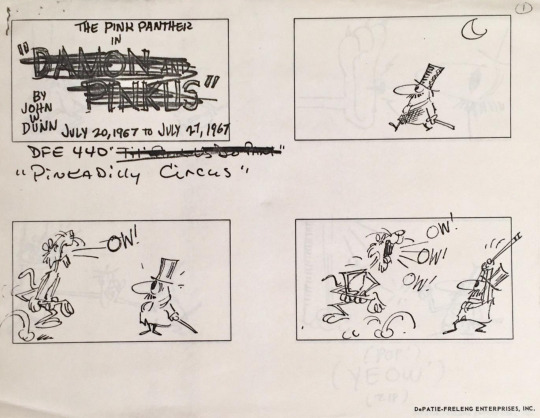
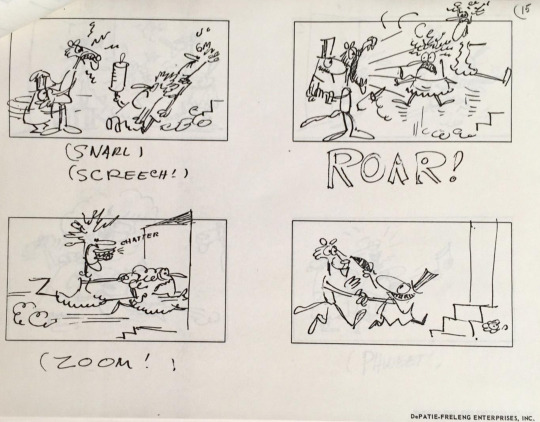
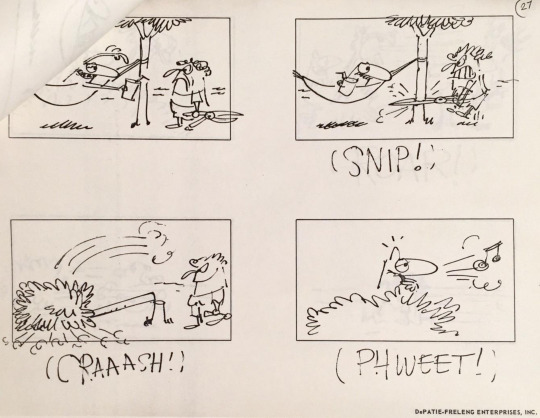

Storyboards for 1968’s Pinkadilly Circus, done by John W. Dunn
Directed by Hawley Pratt for DePatie-Freleng Enterprises
#animation#classic cartoons#cartoons#production art#art#dark age of animation#the pink panther#storyboards#depatie freleng#circus#the little man#dog#comedy#slapstick#1960’s
5 notes
·
View notes
Text
The Inspector (DePatie-Freleng, 1965) - complete series
#Pink Panther#Inspector Clouseau#Peter Sellers#DePatie-Freleng#1960s#TV animation#classic cartoon#complete series#Saturday Morning
4 notes
·
View notes
Text

The Cat in the Hat Publicity Cel (DePatie-Freleng, c. 1970s-80s)
The Cat in the Hat is featured here in this delightful hand-painted original publicity cel based on Dr. Seuss' beloved classic children's book. The first adaptation of the book was the famous 1971 animated TV special produced by DePatie-Freleng Enterprises in collaboration with Chuck Jones and Ted Geisel.
#Dr. Seuss#The Cat in the Hat#art#vintage#publicity cel#DePatie-Freleng#tv#1971#Chuck Jones#Ted Geisel
17 notes
·
View notes
Text

Isadore 'Frriz' Freleng (August 21, 1906 – May 26, 1995).
Credited as I. Freleng early in his career, he was an American animator, cartoonist, director, producer, and composer known for his work at Warner Bros. Cartoons on the Looney Tunes and Merrie Melodies series of cartoons. In total, he created more than 300 cartoons.
He introduced and/or developed several of the studio's biggest stars, including Bugs Bunny, Porky Pig, Tweety, Sylvester, Yosemite Sam (to whom he was said to bear more than a passing resemblance), and Speedy Gonzales. The senior director at Warners' Termite Terrace studio, Freleng directed more cartoons than any other director in the studio (a total of 266), and is also the most honored of the Warner directors, having won five Academy Awards and three Emmy Awards. After Warner closed down the animation studio in 1963, Freleng and business partner David H. DePatie founded DePatie–Freleng Enterprises, which produced cartoons (including The Pink Panther Show), feature film title sequences, and Saturday-morning cartoons through the early 1980s.
2 notes
·
View notes
Text
The Pink Phink (1964)
https://youtu.be/59lKdaXX6Eo

-Lead animator/Director/Studio
The cartoon was directed by Friz Freleng, and co-directed by Hawley Pratt; produced by DePatie–Freleng Enterprises production company; and animated by Don Williams, Bob Matz, Norm McCabe, and LaVerne Harding.
-Outline of the story
The story is about a pink panther, who observes a man painting the interior of a house blue. Pink Panther intervenes, and sneakily paints the house pink while the painter is not looking. Each time the painter paints a surface blue, he turns back to see that it has mysteriously been painted over with pink paint right after he looks away. This makes him believe that he is going crazy. That is until he finds a clue from Pink Panther’s paw prints, that he realizes there is a culprit behind this phenomenon. The painter spots Pink Panther and determines to shoot him with a shotgun, but Pink Panther tricks the painter into shooting at the house with the paint-filled gun, which turns the whole house pink. In anger, the painter buries all the pink paint he can find beneath the ground, which later makes all the plants surrounding the house sprout as pink coloured plants. Pink Panther is excited by the outcome of the all-pink estate; he shakes the painter’s hand and moves in, leaving the painter to bang his head on a pink mailbox out of frustration and exasperation. The Pink Panther gets his happy ending.
-The Technique, or new Technology used in the creation of the short?
The technique they used to make this short was traditional, hand-drawn animation. People loved that it featured a pantomime-style of animation, and loved the character; a sophisticated, cunning, and pink cartoon panther. The short was “backed by variations on Henry Mancini’s slithery, saxophone-y Pink Panther theme.” The silent little altercations that he gets into with the antagonist is comedic and entertaining to watch, and the story is universally understood despite the cartoon’s lack of dialogue.
-The Reception (How did people of the time feel about it)
This short was so successful that it won the 1964 Oscar for Best Animated Short. It was the first time that a studio won an academy award with its first animated short. But its immediate success was not beginner's luck, as David DePatie was the son of one of the Warner Bros, and a winner of an earlier Academy Award for sound editing for another work before producing this short. And Friz Freleng also directed no less than five Oscar winners, including Bugs Bunny and Speedy Gonzales. The two collaborated to produce this cartoon, which later on acquired its own slot as a Sunday morning T.V. show.
-Sources used:
Freleng, Hope, et al. Meet the Pink Panther. United Kingdom, Universe Publishing, 2005.
“Put a Panther in Your Tank.” TIME Magazine, vol. 86, no. 14, Oct. 1965, pp. 9–90. EBSCOhost, https://search-ebscohost-com.ezproxy.langara.ca/login.aspx?direct=true&db=edb&AN=54031748&site=eds-live&scope=site.
https://web.archive.org/web/20160309085124/http://dfe.goldenagecartoons.com/filmography/1964-65.htm#
https://lifestyle.iloveindia.com/lounge/history-of-pink-panther-8672.html
1 note
·
View note
Text






Senorella and the Glass Huarache premiered Aug 1, 1964, and was directed by Hawley Pratt. This was the last cartoon made by the original Warner Brothers studio. It would re-open later in 1964 as DePatie-Freleng Enterprises, and then as Warner Bros-Seven Arts in 1967. To most fans and historians, this is considered the end of the classic era. It is the 101st of 101 Looney Tunes and Merrie Melodies honorable mentions.
1 note
·
View note
Text
Happy 70th Birthday Speedy Gonzales
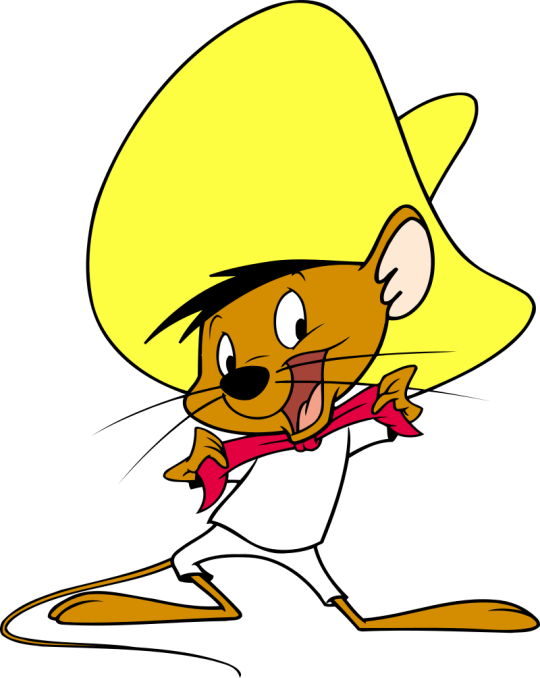
Another one of the most famous cartoon characters of the Looney Tunes and Merrie Melodies series of short films, and the second most prominent foreigner character of the WB cartoon cast next to Pepe Le Pew.
dailymotion
First appeared in Robert McKimson’s “Cat-Tails for Two” of the prototype Speedy......

......while his first official was in Friz Freleng’s 1955 Academy Award winning short of the same name, featuring a more refined and familiar Speedy.

Speedy proved to be successful and starred in several more cartoons with Sylvester, by either McKimson or Freleng. Despite these cartoons being one of the most famous and most memorable offerings of the Looney Tunes short film series, Friz Freleng would later admit he found the character to be too inflexible, eventually growing tired of him and wanted to put his focus on Slowpoke Rodríguez instead, which didn’t come about due to the amount of film it took to have Slowpoke doing pretty much anything.
While the character enjoyed the enduring popularity of the other Looney Tunes characters, Bugs Bunny, Daffy Duck and Porky Pig, he would later star in a rather infamous series of shorts where Daffy is paired with Speedy during the WB cartoons dark period during the DePatie-Freleng Enterprise and Warner Bros. Seven Arts era of the Looney Tunes/Merrie Melodies, and would later (along with another foreigner LT character, Pepe Le Pew) attract controversy due to perceived racial stereotypes. One of these stories involved Cartoon Network’s banning of the Speedy cartoons when the network had required the exclusive airing rights to the classic WB cartoon library 1999. Later, the network would include Speedy films in their schedule from then on.
Another story included a Tiny Toons character, Lighting Rodriguez being a Speedy Gonzales clone that Tom Ruegger didn’t use to avoid any sort of controversy.
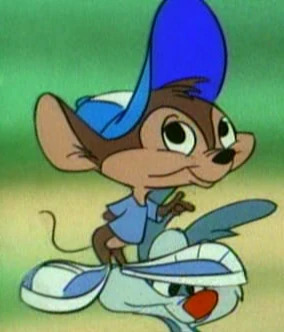
Regardless, Speedy was a fine character who provide some great memorable moments and diversity in the Looney Tunes cartoons.
#Speedy Gonzales#robert mckimson#friz freleng#looney tunes#merrie melodies#warner bros.#birthday#tiny toon adventures#tiny toons#lightning rodriguez
47 notes
·
View notes
Video
The Pink Panther in Pinkadilly Circus
The Pink Panther animated shorts produced between December 18, 1964 and February 1, 1980 by DePatie-Freleng Enterprises (DFE Films) Ninety-two shorts were released theatrically, and eventually appeared on Saturday mornings via The Pink Panther Show starting in 1969. All made-for-television entries were also distributed to theaters after initially airing on The All New Pink Panther Show in 1978-1980.
0 notes
Text

''BAGGY PANTS AND THE NITWITS''
Es una serie animada estadounidense de 1977 producida por DePatie-Freleng Enterprises y transmitida por NBC.
Año de inicio: 10 de septiembre de 1977
Año de finalización: 3 de diciembre de 1977
Dirección: Brad Case, Gerry Chiniquy, Sid Marcus, Robert McKimson, Spencer Peel
Créditos: Tomado de Wikipedia
https://en.wikipedia.org/wiki/Baggy_Pants_and_the_Nitwits
Para ver el tráiler ingresa al enlace:
https://www.youtube.com/watch?v=81YGfFeq97M
0 notes